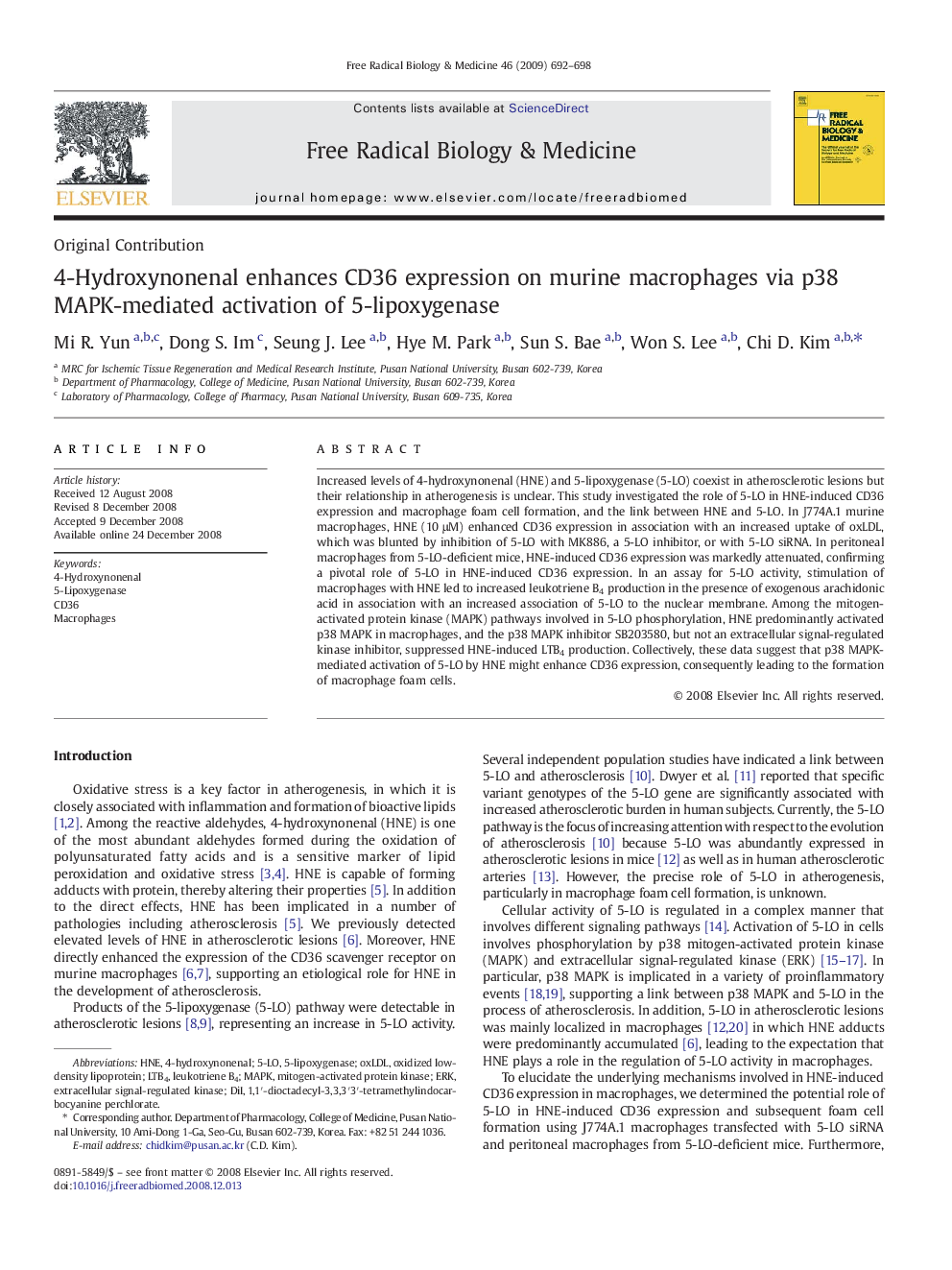| Article ID | Journal | Published Year | Pages | File Type |
|---|---|---|---|---|
| 1910305 | Free Radical Biology and Medicine | 2009 | 7 Pages |
Increased levels of 4-hydroxynonenal (HNE) and 5-lipoxygenase (5-LO) coexist in atherosclerotic lesions but their relationship in atherogenesis is unclear. This study investigated the role of 5-LO in HNE-induced CD36 expression and macrophage foam cell formation, and the link between HNE and 5-LO. In J774A.1 murine macrophages, HNE (10 μM) enhanced CD36 expression in association with an increased uptake of oxLDL, which was blunted by inhibition of 5-LO with MK886, a 5-LO inhibitor, or with 5-LO siRNA. In peritoneal macrophages from 5-LO-deficient mice, HNE-induced CD36 expression was markedly attenuated, confirming a pivotal role of 5-LO in HNE-induced CD36 expression. In an assay for 5-LO activity, stimulation of macrophages with HNE led to increased leukotriene B4 production in the presence of exogenous arachidonic acid in association with an increased association of 5-LO to the nuclear membrane. Among the mitogen-activated protein kinase (MAPK) pathways involved in 5-LO phosphorylation, HNE predominantly activated p38 MAPK in macrophages, and the p38 MAPK inhibitor SB203580, but not an extracellular signal-regulated kinase inhibitor, suppressed HNE-induced LTB4 production. Collectively, these data suggest that p38 MAPK-mediated activation of 5-LO by HNE might enhance CD36 expression, consequently leading to the formation of macrophage foam cells.
